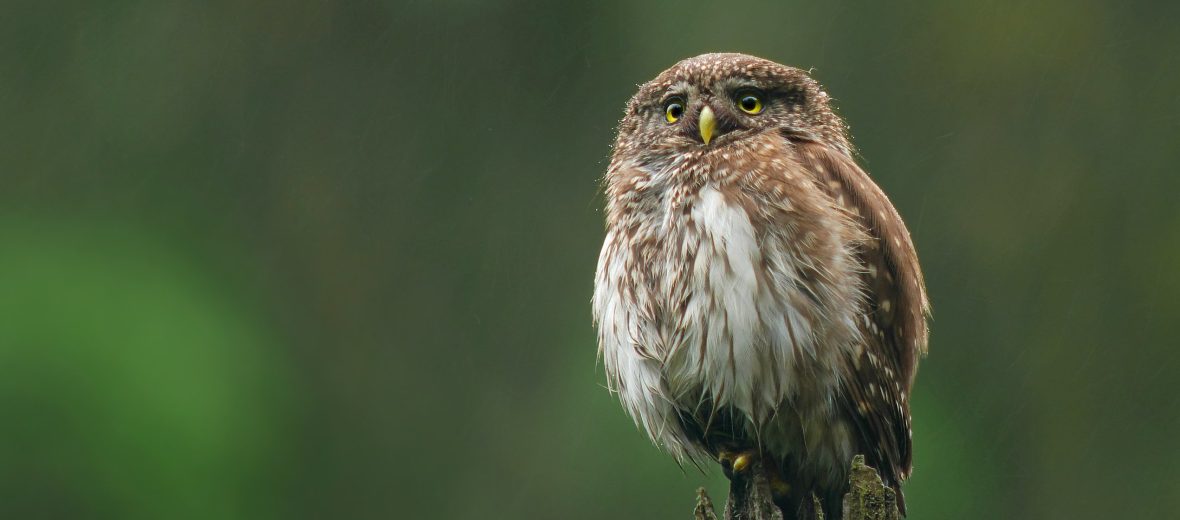
The Eurasian pygmy owl is the smallest owl species in Europe. They can be found from Europe to Siberia. These owls prefer the cooler temperatures found in the taiga coniferous forests at higher mountainous elevations with both coniferous and mixed forest habitats. Even though these owls face the threat of habitat destruction at the hands of the logging industry and residential & commercial developments and subsequently are thus vulnerable to predation in more open territories that are developed as a result of said deforestation, they are still quite numerous and are listed as Least Concern by the IUCN. They number an estimated 1,200,000 wild individuals. Their populations are currently stable, as of 2016.
First the Stats…
Scientific name: Glaucidium passerinum
Weight: Up to 2 ounces
Length: Up to 7.5 inches
Wingspan: Up to 15.35 inches
Lifespan: Up to 7+ years
Now on to the Facts!
1.) Unlike most owls, these critters are crepuscular (active at dawn and dusk).
2.) Voles, lemmings, bats, rats, mice, small birds like crossbills, chaffinches, thrushes, and leaf-warblers, amphibians, lizards, and even fish are all on the menu.
3.) These owls are quick and agile in flight and are able to catch birds in mid-flight.
4.) Pygmy owls also cache fair amounts of small mammals and birds in their nest site for the winter.
5.) Their food availability is directly correlated to the weather. The more harsh the weather, the fewer kills can be made, as prey animals are just not as available. Climate change, therefor, has a direct effect on these birds.
But wait, there’s more on the Eurasian pygmy owl!
6.) They often nest in abandoned great spotted woodpecker holes.
7.) Eurasian pygmy owls are typically sedentary, in that they don’t migrate to warmer climates during the winter months. However, the young will sometimes relocate to warmer climates till they get older.
Did you know…?
They fly using an undulating flight pattern, over long distances.
8.) These owls are serially monogamous (stay with a single partner for the breeding season) and separate after their young are fledged.
9.) Males are creatures of habit and tend to use the same nesting hole for several years.
10.) Females lay up to 7 eggs that hatch in up to 4 weeks.
But wait, there’s still more on the Eurasian pygmy owl!
11.) The owlets fledge in up to 34 days.
12.) Larger owls, large birds of prey, and weasels all prey on Eurasian pygmy owls.
Now a Short Eurasian Pygmy Owl Video!
Be sure to share & comment below! Also, check out the Critter Science YouTube channel. Videos added regularly!
Want to suggest a critter for me to write about? Let me know here.
Some source material acquired from: Wikipedia & IUCN
Photo credit: Frank Vassen



